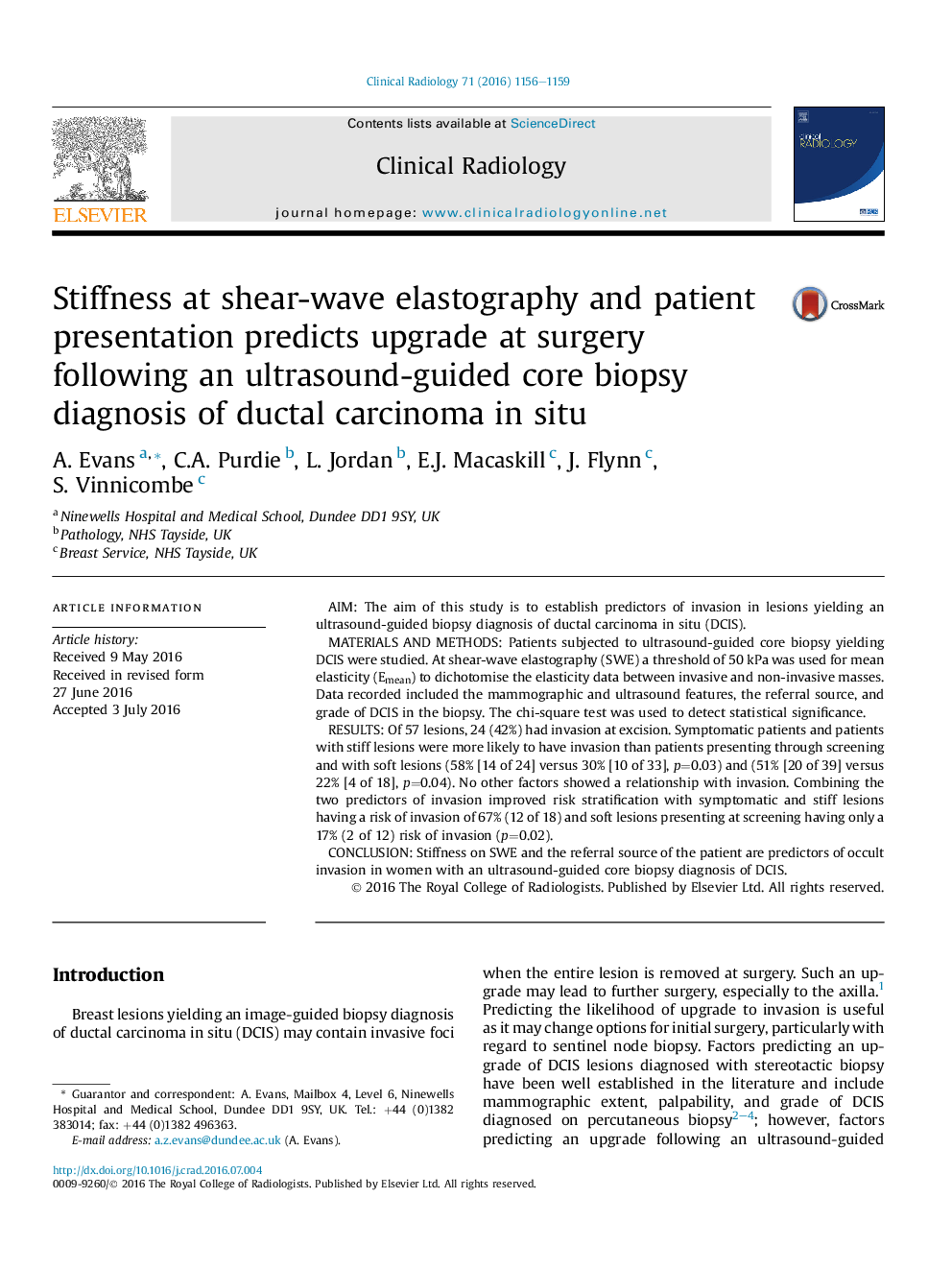| Article ID | Journal | Published Year | Pages | File Type |
|---|---|---|---|---|
| 3981117 | Clinical Radiology | 2016 | 4 Pages |
•Stiffness on SWE predicts occult invasion in women with a US guided biopsy diagnosis of DCIS.•Whether a patient has symptoms also predicts the presence of occult invasion.•Combining these factors allows stratification of invasion risk.
AimThe aim of this study is to establish predictors of invasion in lesions yielding an ultrasound-guided biopsy diagnosis of ductal carcinoma in situ (DCIS).Materials and methodsPatients subjected to ultrasound-guided core biopsy yielding DCIS were studied. At shear-wave elastography (SWE) a threshold of 50 kPa was used for mean elasticity (Emean) to dichotomise the elasticity data between invasive and non-invasive masses. Data recorded included the mammographic and ultrasound features, the referral source, and grade of DCIS in the biopsy. The chi-square test was used to detect statistical significance.ResultsOf 57 lesions, 24 (42%) had invasion at excision. Symptomatic patients and patients with stiff lesions were more likely to have invasion than patients presenting through screening and with soft lesions (58% [14 of 24] versus 30% [10 of 33], p=0.03) and (51% [20 of 39] versus 22% [4 of 18], p=0.04). No other factors showed a relationship with invasion. Combining the two predictors of invasion improved risk stratification with symptomatic and stiff lesions having a risk of invasion of 67% (12 of 18) and soft lesions presenting at screening having only a 17% (2 of 12) risk of invasion (p=0.02).ConclusionStiffness on SWE and the referral source of the patient are predictors of occult invasion in women with an ultrasound-guided core biopsy diagnosis of DCIS.
